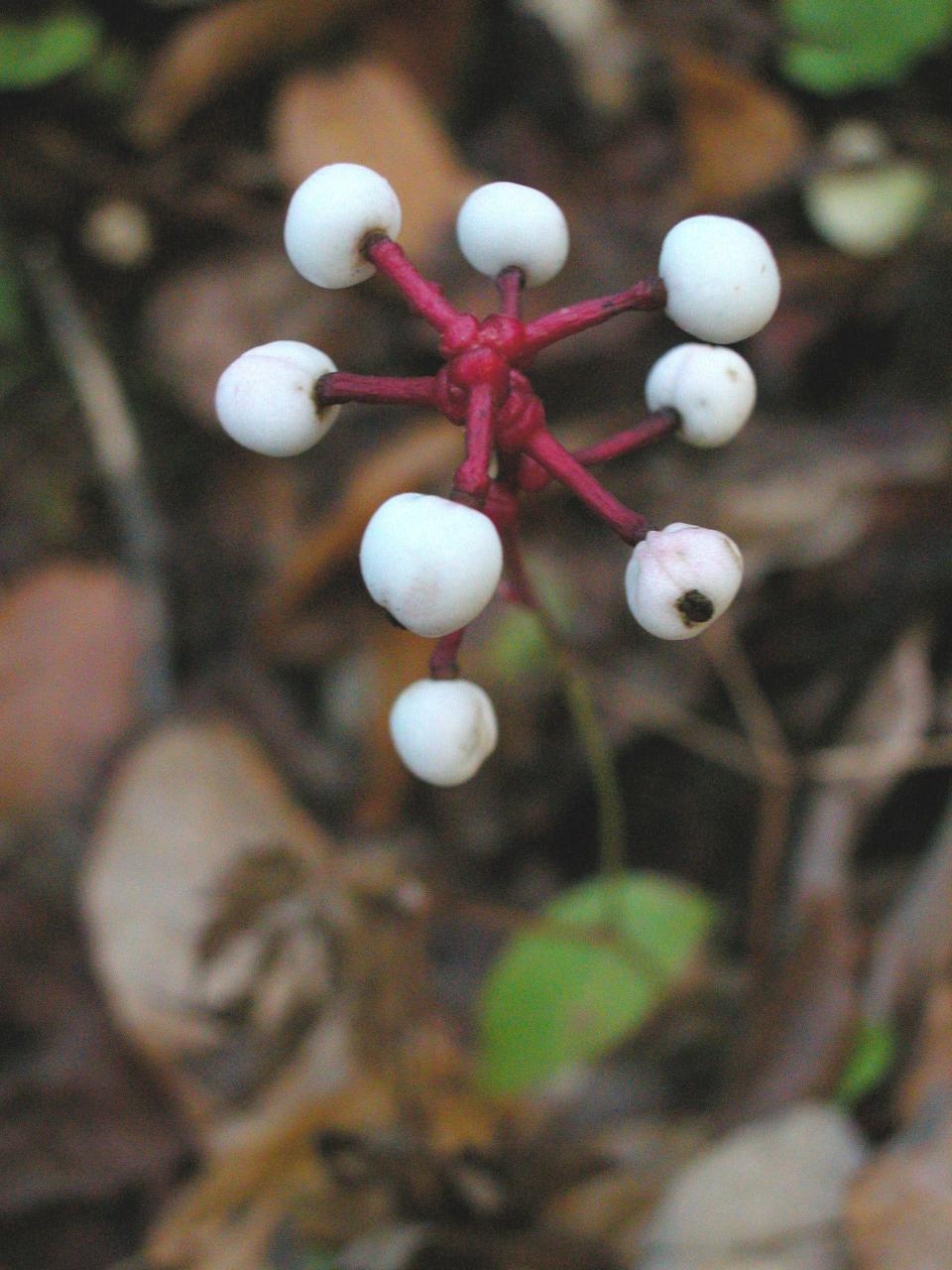You might get the feeling this native herb is staring at you | Mystery Plant
They say that when you are in a field of corn, you have to be careful what you say, since there are so many ears. Similarly, there are various forests in the eastern United States in which you have to be careful what you do, because there are plenty of eyes. Little, white, staring eyes.
This plant is a native herb, and it is reasonably common in damp, rich forests and on mountain slopes, from New Brunswick and Ontario well into the Great Lakes, then south through parts of Arkansas, and all the way south to the Florida Panhandle — where it is rare.

I’ve seen it way up in the flowery hollers of the Allegheny Mountains, growing alongside violets, cohosh, trilliums, ginseng, and Solomon’s-seal. In the Carolinas and Virginia, our mysterious herb is mostly a plant of the mountains and upper piedmont.
The plants (Doll’s eyes, White baneberry, Actaea pachypoda) are shade-loving perennials, from a solid rootstock, coming up in the spring and unfolding one or two large, lovely, much-dissected leaves, the leaflets bearing plenty of raggedy teeth along the edges. These leaves aren’t very good for identifying this little plant, because there are plenty of other mountain herbs with very similar foliage.
Flowers appear on the stem about April, arranged usually in a somewhat elongated cluster, each one forming a sort of powder-puff: the flowers themselves are pale yellow, and with plenty of stamens, but otherwise are rather drab, I think. Each flower is at the end of a relatively thick stalk. And it is “thick stalk” in Greek which gives us the species name. Later, the ovary of each flower swells into a soft green berry, which has several tiny seeds inside.
The berries, like so many other fruits, change color as they age. These start out light green, but during the summer become paler, and eventually end up conspicuously white. They are quite prominent and attractive, especially in combination with the thickened flower stalks, which often become a bright red.
The end of each ripe berry retains the stumpy, dried stigma of the flower, from back in the spring, and it is pretty much black. Thus, the effect is of a cluster of little white eyes — staring eyes — something like those that may have been part of a baby-doll’s face.
It would be great if such pretty little berries were sweet and tasty. But if you see this plant, in fruit, don’t try eating any parts of it, especially the berries. The whole plant is probably at least somewhat toxic, and it might make you sick. There has been supposedly some medicinal use made of this plant, but I expect that its greatest “use” now is in being admired.
This little plant has several close relatives, and they are all members of the buttercup family (Ranunculaceae). The flowers don’t look at all like buttercups, but then again, buttercups belong to a completely different genus. By the way, one of our mysterious herb’s closest relatives looks really similar, except that ITS little fruits are bright, shiny red— and it is much less common.
John Nelson is the retired curator of the Herbarium at the University of South Carolina, in the Department of Biological Sciences. As a public service, the Herbarium offers free plant identifications. For more information, visit www.herbarium.org or email johnbnelson@sc.rr.com.
This article originally appeared on Tallahassee Democrat: Rare in Florida, toxic berries give doll's eyes plant its name

